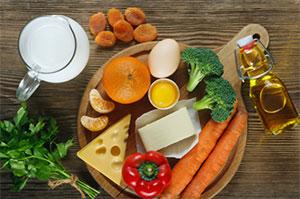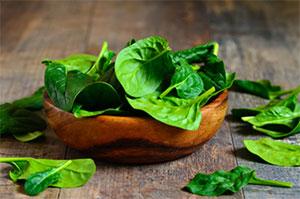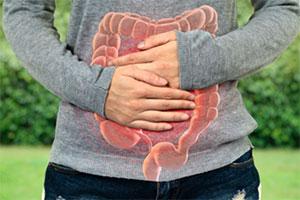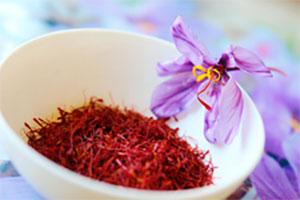Date Posted
Dear Nutrition Enthusiast,
RESEARCH UPDATE: ON THE CLINICAL FRONT
Effects of Supplemental Calcium and Vitamin D on Circulating Biomarkers of Gut Barrier Function in Colon Adenoma Patients

Preclinical studies suggest calcium, vitamin D, and vitamin D receptor are involved in intestinal mucosal barrier integrity and formation of colorectal neoplasms. In a subset of patients previously diagnosed with colorectal adenoma from the Vitamin D and Calcium Polyp Prevention Study, a randomized, placebo-controlled, clinical trial, Vermandere and colleagues tested the effects of supplemental vitamin D3 (1000 IU/d) and calcium (1200 mg/d) on four circulating biomarkers of gut permeability (anti-flagellin and anti-lipopolysaccharide IgA and IgG) from baseline to 1 and 3 or 5 years postbaseline. No changes in circulating gut barrier biomarkers were found in the supplemental vitamin D3 and/or calcium groups. However, at baseline, the combined permeability score of these four biomarkers was 14% lower in women, 10% higher in those who consumed >1 serving/d of red or processed meats, and 49% higher among participants with a (BMI)>35 kg/m2. Although these results suggest that the selected circulating biomarkers of gut permeability were not influenced by calcium and/or vitamin D3 supplementation, further investigation is warranted to assess the impact of lifestyle factors such as diet and obesity on gut permeability and colorectal cancer.
Announcements
Notice of Special Interest (NOSI): Dietary, Physical Activity, Sedentary Behavior and Sleep Assessment Methodologies Among Infants and Young Children (Birth to 5 years) through AdultsNOTICE NUMBER: NOT-CA-21-108
Expires: May 8, 2023
Notice of Special Interest (NOSI): Dietary Effects on Nutrient Sensing Pathways in Tumor Etiology and Prevention
NOTICE NUMBER: NOT-CA-21-121
Expires: September 08, 2024
Upcoming Events
April 2-5, 2022American Physiological Society Annual Meeting at Experimental Biology
Philadelphia, PA
April 8-13, 2022
American Association for Cancer Research: Decoding Cancer Complexity | Integrating Science | Transforming Patient Outcomes
New Orleans, LA
April 28, 2022
American Institute for Cancer Research Lifestyle and Cancer Symposium- Innovation to Impact
(Virtual)
May 16-18, 2022
42nd National Nutrient Databank Conference: 125 years of Food Composition: Where We’ve Been and How We’re Evolving Globally
(Virtual)
June 10-12, 2022
Oncology Nutrition Dietetic Practice Group of the Academy of Nutrition and Dietetics
Rosemont, IL
June 14-16, 2022
American Society for Nutrition: Nutrition Live Online 2022: Where the Best in Science and Health Meet
(Virtual)
RESEARCH UPDATE: WHAT’S NEW IN BASIC SCIENCE
Dietary Spinach Reshapes Gut Microbiome and Multi-omics Insights

Dark leafy vegetables such as spinach (SPI), rich in diverse bioactives, has been linked to decreased colorectal cancer risk. Using an Apc-mutant polyposis in rat colon (Pirc) model, Chen and colleagues examined the interrelationships between dietary exposure of SPI, host genetics, gut microbial composition and disease outcome. Pirc and wild type (WT) rats were fed AIN93 control diet or AIN93 diet containing 10% freeze-dried baby spinach for 26 weeks. Both Pirc and WT rats fed SPI had significant increases in the microbiota α-diversity which coincided with reversal of phylum-, family- and genus-level taxonomic changes. In SPI-fed rats, transcriptomic and metabolomic analyses corroborated the reshaping of the gut microbiome. Significant changes in anti-inflammatory and tumor suppression mechanistic pathways occurred in colon polyps matched to normal tissues in SPI-fed rats, including increases in linoleate bioactives with known anti-inflammatory/ proapoptotic mechanisms, as well as N-aceto-2-hydroxybutanoate, consistent with altered butanoate metabolism from increased α-diversity of the gut microbiome. Further multi-omic studies evaluating phytonutrients and fiber are warranted to provide insight on mechanisms of cancer prevention and precision nutrition in the clinical setting, including immunoepigenetic strategies targeting IFN-γ signaling.
Upregulation of Polycistronic microRNA-143 and microRNA-145 in Colonocytes Suppresses Colitis and Inflammation-associated Colon Cancer

In previous work, Dougherty and colleagues found the metalloprotease ADAM17 to promote colonic tumorigenesis. They now investigate the potential microRNAs (miRNAs, also miRs) regulating ADAM17 (i.e., miR-143, miR-145, miR-148a, and miR-152) and examined effects of diet and tumorigenesis on these miRNAs. Tumors were induced with AOM/DSS in WT and in transgenic mice (Tg) expressing pre-miR-143/miR-145 under villin promoter. In the AOM/DSS model the effects of a standard diet (5% fat) and Western diet (20% fat) were examined. Colonic miR-143, miR-145, miR-148a, and miR-152 were downregulated in tumors and they were reduced by the Western diet. Interestingly, Tg mice were resistant to DSS colitis and had significantly lower cancer incidence, tumor multiplicity, and putative targets of miR-143 and miR-145, including diminished ADAM17, K-Ras, XPO5, and SET. This study demonstrates miRNA tumor suppressor roles and encourage studies to examine miRNA-mRNA interactions in specific cell types for colon cancer prevention.
SPOTLIGHT INVESTIGATOR: Karam El-Bayoumy, Ph.D.

Karam El-Bayoumy, Ph.D. is a Distinguished Professor of Biochemistry and Molecular Biology, Pennsylvania State University, College of Medicine, and the Associate Director of Basic Research at the Penn State Cancer Institute. Dr. El-Bayoumy’s research focuses on the prevention of tobacco- and environmentally related cancers by various synthetic and naturally occurring chemoprevention agents combined with dietary manipulations. Traditionally, his laboratory takes leads from epidemiologic observations, examines these leads in a preclinical setting and then translates the findings into clinical cancer prevention initiatives. He was the first to develop a novel mouse model using the tobacco constituent dibenzo[a,l]pyrene (DB[a,l]P) to induce cancer in the oral cavity and demonstrated that black raspberries (BRB) inhibit DB[a,l]P-induced DNA damage, mutagenesis, and carcinogenesis in this target organ. BRB also restored the tumor suppressor protein, p120ctn, which is known to be downregulated in more than 70% of human head and neck cancer. He also showed that BRB enhances the DNA repair capacity of bulky lesions and alters epigenetic markers in a manner consistent with cancer prevention. Dr. El-Bayoumy received an R01, Chemoprevention by Black Raspberry of Oral Cancer Induced by Tobacco Carcinogens: Translational Studies.
Read more about Dr. Karam El-Bayoumy
Did You Know? Saffron: The Coveted Spice

Saffron, thought to originate from Southwest Asia, is the dried flower stigma of the delicate purple Crocus sativus flower. Only three strands of saffron are yielded per flower and it takes 75,000-125,000 flowers to yield one pound of saffron! This coveted and expensive spice is cultivated in Greece, India, Morocco, and Spain, however, 90% of the three-hundreds tons of saffron produced annually in the world comes from Iran. Saffron has traditionally been valued for its medicinal properties as an anti-asthmatic, anti-depressant, anti-hypertensive, antioxidant, anti-inflammatory, antitussive, and more recently anti-cancer properties. Its exotic bright golden orange-red color, the result of the carotenoid α-crocin, a water-soluble derivative, has historically made it a popular natural dye. In addition to carotenoids, saffron is rich in zeaxanthins and lycopenes; and offers a good dose of riboflavin and thiamine. Saffron has more than 150 volatile and aroma-yielding compounds including safranal (makes up 70%), all contributing to saffron’s distinct scent; while the metabolite picrocrocin contributes to its slight bitter taste appreciated in many cultures.
A little saffron goes a long way and is a prized finishing touch to many international recipes including French bouillabaisse, Spanish paella, Indian biryani, and Persian desserts. Alternatively, a few saffron strands can be simply steeped in warm water or milk, just like tea. If you invest in saffron be sure to use it within a year for the most flavor and color!